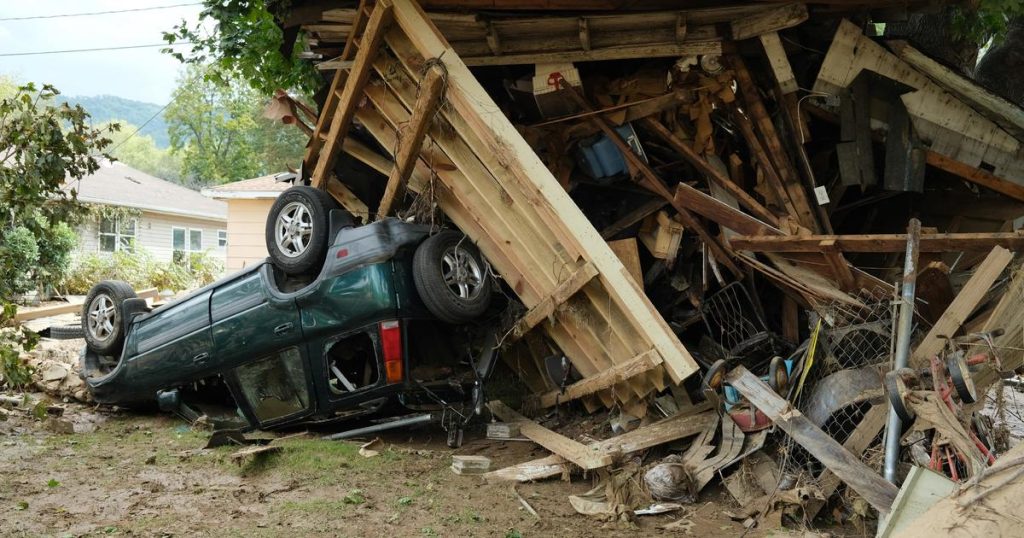Zoe Dadian’s front yard in Swannanoa, North Carolina, became a front line during the catastrophic flooding caused by the remnants of Hurricane Helene, which left houses floating by with people sitting on top, screaming for their lives. After the floodwaters receded, neighbors discussed the warnings that were issued before the flood hit, indicating the importance of timely alerts and evacuation orders from local authorities. Severe weather watches and warnings come from the National Weather Service, while evacuation orders are sent out by local authorities. Many communities use the Federal Emergency Management Agency’s Integrated Public Alert and Warning System (IPAWS) to push messages to cellphones, TVs, and radios in disaster-impacted areas.
In Buncombe County, where Zoe Dadian lives, a mandatory evacuation order was sent out at 6:15 a.m. on September 27, but Dadian did not receive the alert on her phone until 1 p.m. by which time, a landslide had already occurred, leaving no time for evacuation. The delay in the transmission of the evacuation order was attributed to many cell towers being down due to the flooding, posing a challenge for timely alerts during flash floods. FEMA Administrator Deanne Criswell emphasized the need for learning how to better warn people even when the exact location of flash flooding is unclear, and the cell towers play a critical role in this process.
Despite the challenges posed by downed cell towers and communication issues during disasters, some counties certified to issue IPAWS alerts did not send any alerts during Hurricane Helene. Of the 43 counties that experienced deaths during the hurricane, 29 did not send out alerts using IPAWS. Brian Toolan, a former emergency operations chief, mentioned that small counties can quickly become overwhelmed during emergencies, emphasizing the importance of timely alerts and preparations. CBS News also analyzed FEMA data during Hurricane Milton, where at least 14 counties in Florida sent out alerts to residents warning them of evacuations and dangerous conditions.
In order for residents to receive critical alerts during emergencies, their phones must be set up to receive alerts through IPAWS. If government emergency notifications are turned off, people will not receive alerts from the system. Some counties have their own alert systems that require people to opt-in in order to receive alerts, and people will not receive those alerts unless they have signed up in advance. Zoe Dadian, whose notifications were turned on, wishes she had known sooner what was going to happen to her community during the flooding. The importance of advanced alert systems and timely warnings to ensure the safety of communities during natural disasters is paramount to prevent loss of life and property.
In conclusion, the experience of Zoe Dadian and her community during the catastrophic flooding in Swannanoa highlights the importance of timely alerts and evacuation orders during natural disasters. The challenges posed by downed cell towers and communication issues during emergencies emphasize the need for efficient systems such as IPAWS to ensure the safety of residents. Learning from past experiences and improving alert systems can help mitigate the impact of disasters and save lives. The collaboration between federal, state, and local authorities is crucial in ensuring effective communication and timely warnings to protect communities from the devastating effects of extreme weather events.


